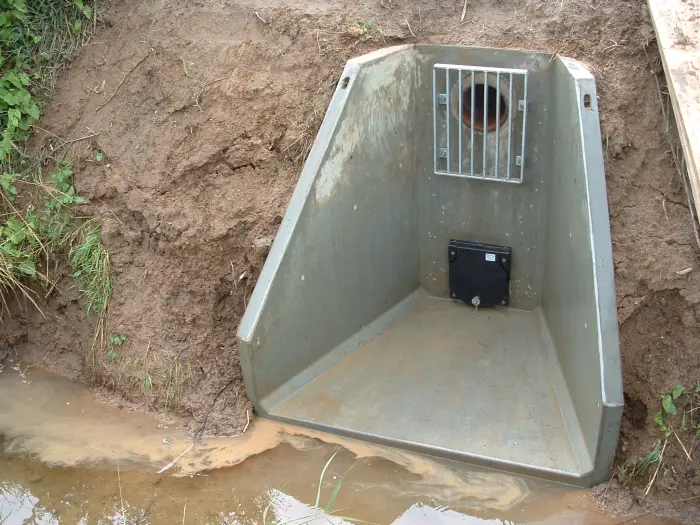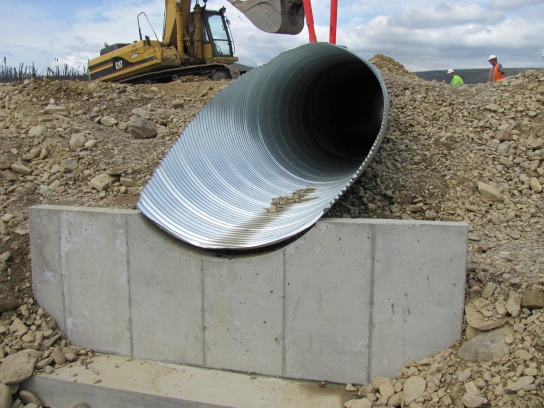Headwalls are used to provide long term support for and cradle the ends of pipes that discharge freely into swales, detention ponds, channels, rivers, and lakes. They previously were constructed of brick and mortar but are now commonly made of precast concrete in a controlled environment, similar to catch basins and manholes.
They may have accessories such as animal guards or flap-gates.

The typical precast headwall is a simple rectangular or square shape with a half circle at the top where the pipe is meant to rest, i.e. a half-height headwall. Half height headwalls will sometimes require cable anchors over top of the pipe so it does not float or move over time.

Also available are full height precast headwalls. There are even precast systems now which are assembled on site with wingwalls as well. The typical crew for placing a precast headwall is 2 laborers and an operator. The equipment required will be an excavator or backhoe rated to lift the weight of the headwall. Some larger headwalls exceeding the lift rating of a backhoe or excavator, may require a full sized crane to lift and place the structure.
Often porous aggregate bedding is placed approximately 6-12” inches under where the headwall is placed. The headwall is lifted with either cast in place eye lifts or by way of straps, chains, or hoists. It is then directed in and placed into position by the laborers. Then the final pipe in the run is placed in the cradle and the surrounding area of the structure is backfilled and compacted.
Headwalls come in many shapes and sizes from small to very large and can support all sorts of pipe types and sizes. For large diameter pipes in the 48″ and larger range, elliptical pipe, precast box culverts, etc, cast-in-place headwalls and wingwalls are more common. In this scenario, the driving force behind precast or CIP is commonly weight and the ability for a precast unit to be transferred legally and safely on a truck bed.